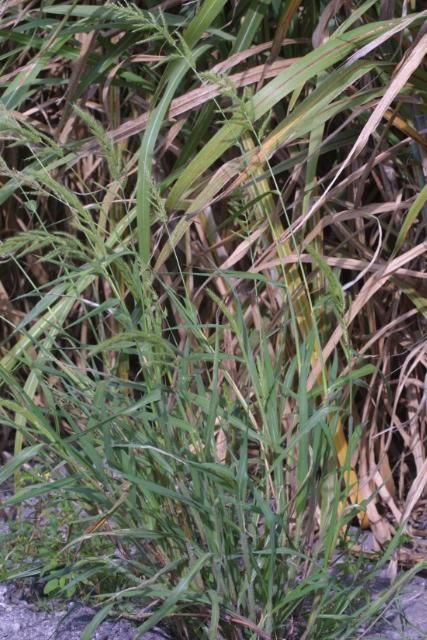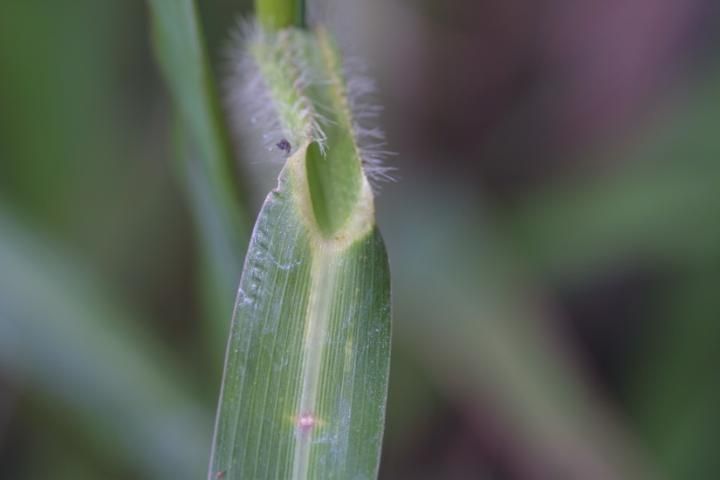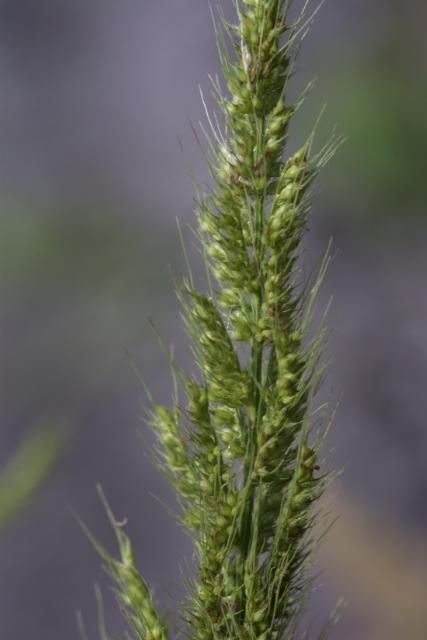Coast cockspur (Echinochloa walteri) is a relative of barnyardgrass that is native to North America (Tiner 1993). It is also referred to as Walter's millet and is widely distributed throughout the eastern United States from Massachusetts inland to Minnesota and south to Florida and Texas (USDA-NRCS 2012). Coast cockspur is widespread throughout Florida and is commonly found in moist to wet cultivated fields, marshes, and swamps, as well as along canals, ditch banks, and the edges of water bodies (CAIP 2012). In south Florida, coast cockspur typically begins to infest sugarcane during the onset of rainfall in late spring.
Biology and Life Cycle
Coast cockspur is an erect annual grass that can grow up to 6 feet tall (Figure 1). Seedling leaves are rolled in a bud and have no ligule. Leaf blades are flat, linear, and smooth to sandpapery. The leaf blades typically grow approximately 3/4–1 inch wide and up to 24 inches long. Like barnyardgrass, coast cockspur has no ligule (Figure 2). Leaf sheaths are covered with very dense stiff, hairs that can prick the skin (Figure 3). The stem is thick and somewhat flattened. The inflorescence is a conspicuous, erect bristle head. It is somewhat branched, open, and made up of many 3- to 12-inch spikelets (Figure 4). Seeds are on the lower side of the branches and are bristly with long, stiff hair at the tip. Coast cockspur propagates by seed. It is highly productive and an abundant seed source for migratory birds.

Credit: D. C. Odero, UF/IFAS

Credit: D. C. Odero, UF/IFAS

Credit: D. C. Odero, UF/IFAS

Credit: D. C. Odero, UF/IFAS
Control
Currently, no herbicides are labeled for selective control of coast cockspur in sugarcane. The best control options are tillage between the row middles, crop rotation, or spot treatments with glyphosate. Glyphosate at a 2% solution is effective on seedling and mature coast cockspur. Control with glyphosate can be improved by adding ammonium sulfate to the spray solution, especially for glyphosate formulations not loaded with adjuvants.
References
Center for Aquatic and Invasive Plants (CAIP), University of Florida Institute of Food and Agricultural Sciences. "Walter's Millet, Coast Cockspur." Accessed September 8, 2022. https://plants.ifas.ufl.edu/plant-directory/echinochloa-walteri/
Tiner, R. W. 1993. Field Guide to Coastal Wetland Plants of the Southeastern United States. Amherst: University of Massachusetts.
United States Department of Agriculture, Natural Resources Conservation Service (USDA-NRCS). "(Pursh) A. Heller Coast Cockspur Grass." September 8, 2022. https://plants.usda.gov/home/plantProfile?symbol=ECWA